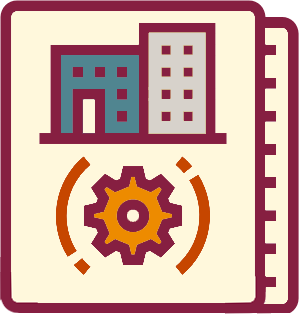Activity Details
This is an optional activity, worth 20 points.
- Due Date: 11:59 PM on Friday, April 30.
- End of Grace Period: 11:59 PM on Monday, May 3.
Goals
- Analyze the rhetorical situation and determine the appropriate audience or users of written communication, considering the needs of global audiences and people with disabilities. [CLO 1]
- Use conventions of various workplace genres, such as proposals, instructions, correspondence, reports, and slide decks, with understanding of how the genre conventions can be used as heuristics and as principles of arrangement. [CLO 4]
- Apply principles of effective visual design for print and electronic presentation, including hierarchical, chronological, and spatial arrangements. [CLO 6]
- Identify and apply the principles of effective style in the composing of usable, reader-centered written communications. [CLO 7]
 The Task
The Task
What I Want You to Do
If you are lucky, when you begin a new job, you will find a continuity folder on the desk or on the computer to help you complete your work. The exact name of this folder will depend on your workplace. It can be called a continuity folder*, binder, portfolio, or book; standard (or standing) operating procedures; or a transition book. You will create a short document to add to a continuity folder that will be given to new students taking this Technical Writing course.
Why I Want You to Do It
By completing this activity, you can do two things: (1) reflect on the term to determine what advice and how-to information to give, and (2) practice your instruction-writing strategies a bit more. Typically cross-training others in your workplace is an important activity because it ensures that company work flow can continue, even if someone is absent from work.
How You Do It
How-To Documents
- Building a Useful Continuity Book (U.S. Army)
- Job Continuity Books
- How to Write a Standard Operating Procedure (SOP) for a Farm (Cornell)
- Standard Operating Procedures: A Writing Guide for a Dairy Farm (Penn State)
- Guidance for Preparing Standard Operating Procedures (EPA)
- Standard Operating Procedure (UN FAO)
- Think back to the beginning of the course, and reflect on things that you wish you knew from the beginning or strategies that you would advise these new students to adopt to have a positive experience in the course.
- Review the How-To Documents in the box on the left to get an idea of the kinds of information that are appropriate. For this project, a list of tips or lessons learned is just as appropriate as step-by-step instructions.
- Decide how to publish your document. It can be a Google Doc, an infographic, a demonstration video, or something else. Since I will share your resources with students I teach in the future, it needs to be simple to integrate with other course documents.
- Write a 300–500 document, using your word processor or Google Docs, that explains your advice and how-to instructions. Keep the following requirements in mind:
- Use a you-attitude that will set your audience at ease.
- Provide concrete information, rather than general advice.
- Use professional design and formatting that makes positive use of the CRAP Design Principles.
- Submit your position statement:
- Submit your work here by 11:59 PM on Friday, April 30.
- If you need more time, use the grace period and submit your work by 11:59 PM on Monday, May 3.
Obtaining the Points for Your Work
This activity is worth 20 points. Be sure to complete the following tasks:
- Track your work in your Weekly Work Log.
- Wait for me to give you points for your answers. Canvas cannot automatically grade written text, so I will confirm that you met the requirements of the activity and add your points manually.
*One point of clarification, businesses, government agencies, and other organizations also create continuity plans, which typically account for how the organization will use to continue operations in a time of emergency. FEMA, for instance, offers advice for how to write this kind of continuity plan. For this activity, you are working on a position-focused continuity folder, not a business or agency plan.